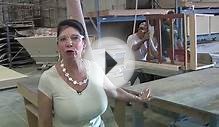
The standard-and durability-of the mobile offers quite a bit related to it’s cost when initially built. A financial budget model is only going to meet minimum HUD standards and, generally, a far more costly model may have higher quality materials and construction particulars. Quite simply, when the original owner purchased a premium type of rv, it'll be more durable and keep going longer. Budget models can start to exhibit indications of degeneration within ten years if poorly maintained.
In an intuitive level, running out of energy tell a financial budget model from the premium one. The fundamental mobile houses look bare-bones and therefore are never wrongly identified as a website-built home. The mid-range continue to be clearly mobile houses, but possess a more house-like proportion and detailing, as the premium models can often be wrongly identified as a website-built home.
Most of the particulars of superior construction are hidden inside the floor, walls, and ceiling of the house, such as the R-worth of the insulation and size and spacing from the floor joists, for instance. But here’s a chart for examining some key visible areas where one can determine if you're searching in a budget, mid-range, or premium rv:
- 1) Roof Pitch - Budget designs include a minimal roof pitch of twoOr12 (2 " of rise for each one foot of length). This really is best measured when searching directly beside the house, as with the photo below. As the standard increases, the rooftop pitch does also.
- 2) Roof Overhang - Probably the most fundamental houses do not have or minimal roof overhang at the back and front. Which means that water runs lower individuals walls each time it rains—not great for durability. Again, because the overhang increases, the same is true the standard of the house.
- 3) Ceiling at exterior walls - Budget houses possess a 7-feet ceiling height, measured in which the ceiling meeting the back and front walls. Because door height remains constant at 6-feet 8-inches, you can aquire a wise decision from the ceiling height in the outdoors, by examining the distance from the foot of the fascia (the board that systems round the fringe of the rooftop) to the top door. Only a couple of inches means a 7-feet ceiling inside. A Couple Of-ft means a 9-feet ceiling, along with a premium home.
- 4) Siding - Sections of wood or particleboard were utilised as siding around the cheaper houses within the eighties to early the nineteen nineties. Older mobile houses have metal siding no matter cost range. Nowadays, budget houses have economy-grade vinyl siding. Higher quality houses have heavier vinyl siding or fiber-cement (for example Hardi-Plank). A particleboard on the sides home, coupled with no roof overhang, always appears to build up moisture invasion problems and wood rot.
- 5) Door - Lesser quality mobile houses possess a door as if you might expect on the travel trailer: thinner and light-weight in comparison to some regular doors, in most cases aluminum. Higher quality houses possess a steel door that carefully resembles what you will find on the site-built home.
- 6) Roofing - Lower-listed houses have lightweight, economy grade shingles, that are just a little hard to tell from regular 3-tab shingles unless of course the thing is both of them side-by-side. But premium roofing of what's known as “dimensional” or “architectural” shingles is simple to place, in line with the extra thickness in the edge, and adjacent shingles that sit slightly forward or away from one another across the front edge. Economy grade shingles possess a shorter lifespan and therefore are more vulnerable to wind damage.
- 7) Interior walls - Budget houses have vinyl-covered wallboard that's butted in the sides. Higher quality houses have battens since the seams in the sides from the boards, and the highest quality houses have completely finished drywall.
- 8) Home windows - Years back, all rv home windows were were just one thickness of glass. More lately, higher quality houses have double-pane insulated glass home windows.
RELATED VIDEO











